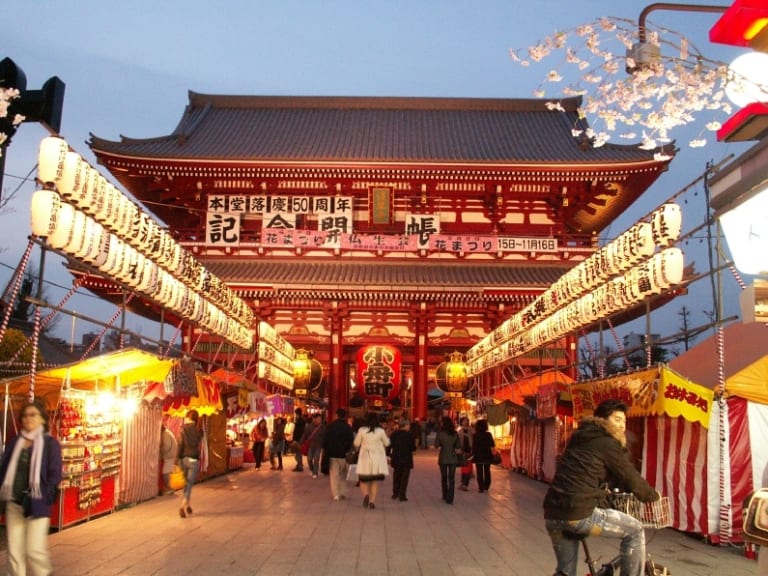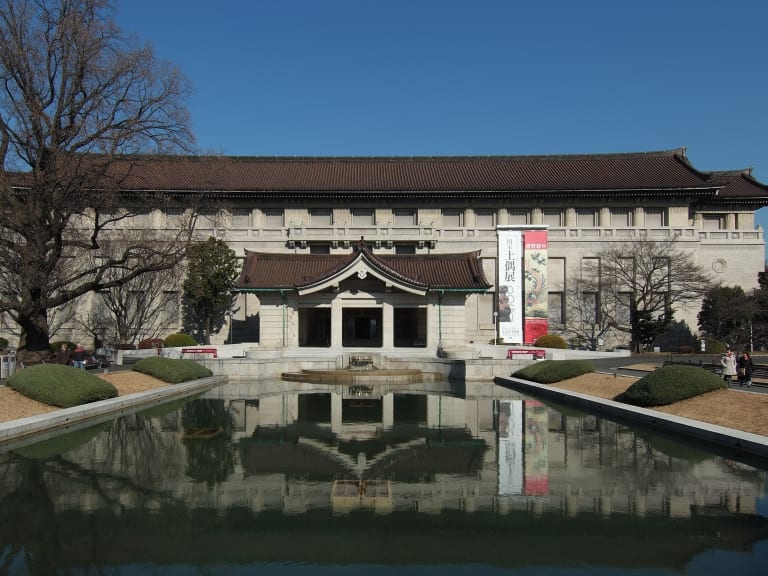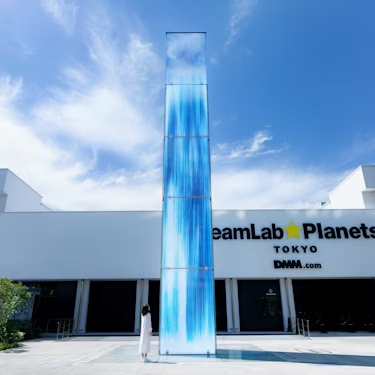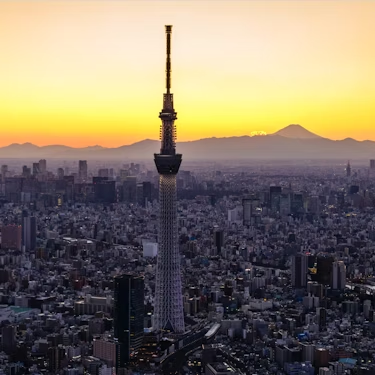More about: Tokyo in 2 Days: everything you need to know
If you only have two days in Tokyo then you'd better hurry, because the Japanese capital is the city with the largest metropolitan area in the world. You may not get to see all the sights in 48 hours, or you may have to skip some of the out-of-town activities such as a trip to Mount Fuji, but it's certainly enough time to see a lot of places if you have the right organisation.
Among the things to see and do in Tokyo, you can't miss an in-depth tour of the centre of the Japanese capital, which is where most of the tourist sites are concentrated.
Day 1: Senso-ji, Ueno Park, Ameyoko flea market and Akihabara district

The itinerary on the first day will start in the northern part of central Tokyo, which includes the main sites such as the Senso-ji Temple, which will be the first stop, and Ueno Park, but also places to have lunch and see the alternative side of the city such as the Ameyoko flea market and the electronic quarter of Akihabara.
Senso-ji Buddhist Temple
Senso-ji is the oldest temple in Japan and also the most important of the Buddhist temples, which is the majority religion in the country.
Founded in 645, it owes its fame to the fact that after World War II, when it was completely destroyed, Japanese citizens collected donations to rebuild it, making it a symbol of national unity during peacetime.
Inside the temple you will find the main building and the five-storey pagoda, which is the second largest in Tokyo, as well as the Nakamise-dori shopping street where pilgrims from all over Japan come to buy food, drinks and other local products.
Admission to the temple is free and it is open daily from 6am to 5pm. It is possible to get there from Tokyo Station by taking the JR Yamanote Line train to Kanda and then the Ginza underground to Asakusa. It is also possible to visit the temple with one of the guided tours of Tokyo.
Ueno Park
The park is the great oasis of Tokyo, a city distinguished by its constant hustle and bustle. Ueno Park with its lush greenery offers a refuge that many of the Japanese take every day. If you visit Tokyo during the spring you can witness the cherry blossom, one of the most beautiful spectacles that Ueno Park has to offer.
However, it has many more attractions, as it is also home to the Art Museum, the Science Museum and the National Museum, as well as temples and shrines.
The zoo inside Ueno Park is ideal if you are visiting Tokyo with children, or if you are interested in native species. Admission is free, and the park is open daily from 5am to 11pm.
Shopping and lunch at Ameyoko Market
This market is located two streets away from Ueno Park's Shinobazu Pond, making it a five-minute walk. The Ameyoko Open Air Market is the ideal place to buy almost anything and to eat at one of the exquisite stalls at the entrance, so a midday visit is ideal for lunch.
The history of Ameyoko is peculiar, as after World War II it became one of the first refuges of Western culture. American goods and sweets were available here, at a time when sugar was a scarce commodity in Japan.
Admission to the market is free and it is open daily from 10am to 8pm, with very affordable prices, especially for food.
Tokyo National Museum

After lunch, the next stop on the tour is inside Ueno Park, so you can get there with another five-minute walk. This is the oldest museum in Tokyo and also the largest in Japan: the National Museum.
The best thing to do is to find out how to get tickets to the National Museum and discover its innumerable collection of Japanese artefacts and works of art. The museum also stands out for the architecture of its building and for the archaeological and anthropological studies it carries out to enhance its collection. Please note that the total tour of the museum can take about five hours. The Tokyo National Museum is open from Tuesday to Sunday from 9.30am to 5pm
. You also have the option of visiting another of the city's most important museums, the Fuji Art Museum, for which you can book your tickets online.
Akihabara electronic neighbourhood tour
To get to Akihabara, known for being Tokyo's electronic quarter and also the epicentre of otaku culture, from the Tokyo National Museum take the Ginza line from Ueno station to Suehirocho, although I recommend the option of a short 15-minute walk.
This neighbourhood has gained popularity in recent years because it has become one of the most eclectic in Tokyo. Here you will love getting lost among the neon signs, capsule hotels and video game shops.
If you like coffee, you can also have a maid café experience in one of the typical cosplay restaurants. Sunday is the best day to visit Akihabara, as this is when the Chuo-Dori trunk street becomes pedestrianised. And, around Akihabara, there are plenty of bars and restaurants with a variety of cuisines where you can dine to end the first day of your Tokyo sightseeing.
Day 2: Imperial Palace, Meiji Jingu Shrine, lunch at Golden Gai, Radio Tower and dinner in Roppongi

If you found the first day intense because of the walking, the second day will be geared towards enjoying the historic buildings, panoramic views and nightlife of Tokyo in one of the city's most vibrant and modern neighbourhoods, for which you can book a night-time photo tour that will surprise you.
Tokyo Imperial Palace
The first stop on the tour will be the Emperor's official residence, which occupies the grounds of the former Edo Castle. Strategically located in the urban centre of Tokyo, it is one of the great fortresses of the country, surrounded by walls and moats for imperial protection.
Although it is one of the most famous buildings in the country, the palace is not open to the general public, so it is only possible to enter the Oriental Gardens that border the perimeter.
It is for this reason that the best known image of the residence is that of the arches of the Nijubashi bridges, which connect the entrance to the inner gardens. Admission to the Palace's Oriental Gardens is free and it is open from Tuesday to Saturday from 9.00 am to 2.45 pm. The Residence is located four blocks from Tokyo Station, which can be reached by most of Tokyo's underground and train lines, including the bullet train.
Meiji Jingu Shrine
Meiji Jingu is Japan's most visited shrine and can be reached from the Imperial Palace on the Chiyoda underground line from Otemachi Station to Harajuku.
The shrine pays homage to Emperor Meiji and Empress Shoken, both of whom were revered by the Japanese. When they died, as a tribute, the shrine was built in the Shibuya district and surrounded by a lush forest planted with more than 300 species of trees from every prefecture in the country.
Despite the Japanese government's special request that the Meiji Shrine and other sacred sites in Tokyo not be bombed during World War II, the forest was damaged and almost completely destroyed.
The reconstruction, which was done with donations from Japanese citizens, symbolises unity in adversity and the recovery of what was lost. Today it is an oasis of peace in the midst of noisy Tokyo.
The best time to visit is during spring or autumn. Be aware that if you visit Tokyo in winter, the paths of Meiji Shrine may be snowed in and the temperature drops drastically. Admission is free and it is open daily from 5am to 6pm.
Make an intermediate stop at Golden Gai
A few streets away from Meiji Shrine, in the Shinjuku district, you can eat at Golden Gai, a maze of six pedestrian alleys where you'll find more than 200 tiny bars and small shops selling exquisite local food. Although some of the stalls are only open at night, it's worth wandering around Golden Gai during the day for it's like travelling back in time in an area that has been preserved just as it was forty or fifty years ago.
In Golden Gai, besides excellent food, you will find great music, ninja-themed restaurants, the best samurai experiences in Tokyo and some hidden attractions such as the Hanazono Shrine.
Golden Gai's proximity to Tokyo' s red-light district of Kabukicho has earned its alleyways a particular reputation, but it's a safe area worth exploring.
Climb the observation deck of the Radio Tower

The Radio Tower can be reached from Golden Gai by combining the Marunouchi and Hibiya underground lines to Kamiyacho Station. At 332 metres high, this tower is the second tallest structure in Japan, second only to Tokyo Skytree, which you can see first hand by booking your tickets in advance.
On a clear day, from either of the two observation decks, you can see Mount Fuji on the horizon and a full panorama of the vastness of the Tokyo metropolitan area.
The structure of the Radium Tower is inspired by the Eiffel Tower and its white and international orange colours were carefully chosen to comply with aviation safety regulations. From the observation deck you will also be amazed by the transparent glass floor that gives you the feeling that you are floating. Entrance to the tower's observation decks costs approximately 10 euros and they are open daily from 9.00 am to 10.00 pm. You can book your tickets here...
Say goodbye to Tokyo by going out for drinks in Roppongi
Accomplished your mission of touring Tokyo in two days and looking for some nightlife fun? Then celebrate in Roppongi, the Japanese capital's best bar and nightclub area, which you can reach from Tokyo Tower on the 88 bus from Toranomon to the Roppongi stop or by taking a 15-minute walk.
The neighbourhood is home to the city's best restaurants and you'll find a wide range of cocktails and a wide range of nightclubs.
Roppongi also has some of the best views in Tokyo, as it is home to the city's tallest towers, and is cosmopolitan thanks to the influence of the artists who have adopted the neighbourhood and the global events that take place in the district every year, such as the International Film Festival that takes place every October in Tokyo and the cherry blossom celebrations in March.




